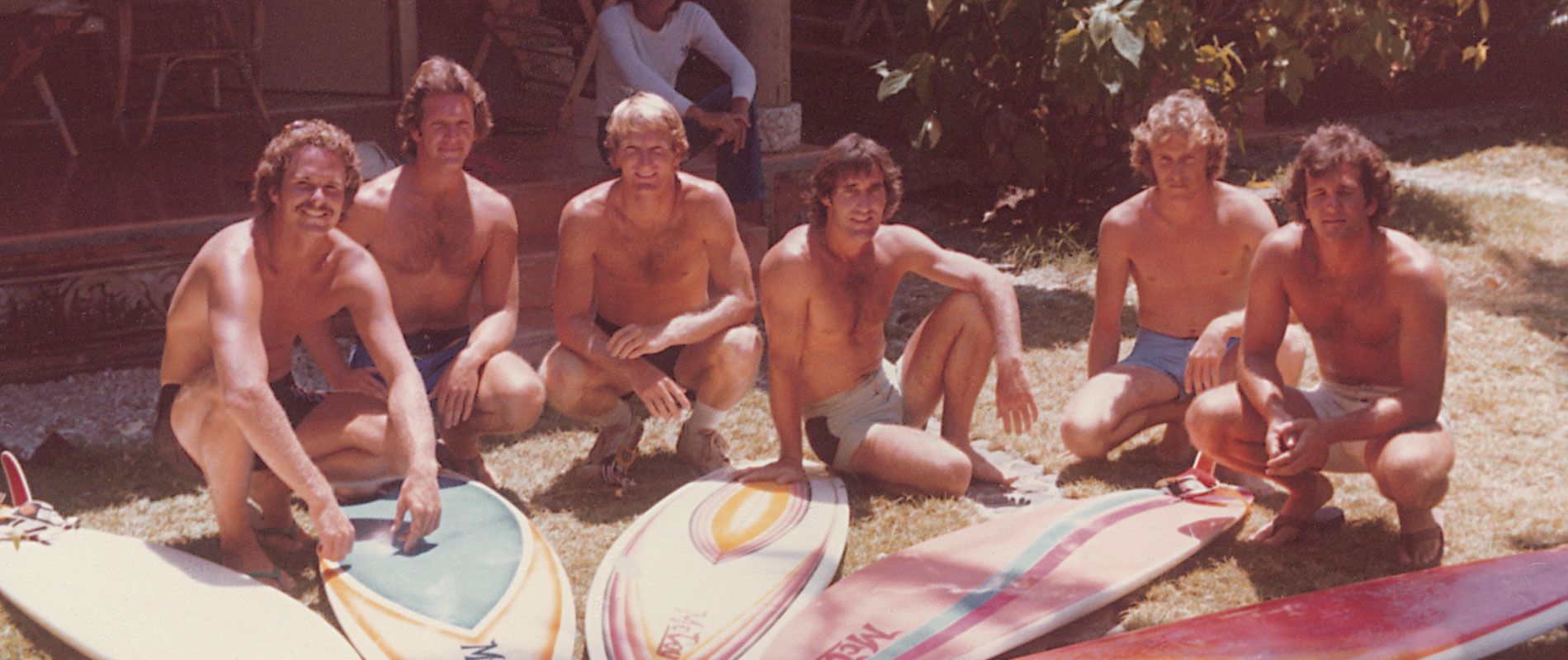
50 Years of Boardriding
A lot has changed in our half-century of existence. We’ve grown from a garage brand to a multi-billion dollar company with offices around the world. There have been highs and lows, ups and downs. But more than anything, mountains and waves. We’ve spent the last 50 years focused on making life better for boardriders — so really, at the core of it all, nothing has changed.
Desipte experiencing numerous moments worthy of global celebration, namely the 10th & 11th world surfing titles won by Kelly, the bumps in the road provoked by the GFC continued to plague Quiksilver in 2010 and beyond. In 2015 the Company’s US entity filed for Chapter 11 bankruptcy. However, an aggressive turnaround program led by the Company management team, combined with Oaktree Capital Managment investing in the company and becoming the majority shareholder, enabled them to re-emerge in 2016. Since then the Company has rectified its cost structure, re-engineered its global development engine, streamlined distribution, reduced excess inventory and instilled clarity, rigor & discipline throughout the entire organisation. In 2017, the company underwent a name change signifying the beginning of a new era at Boardriders Inc. Today, Boardriders are in significantly better shape and once again a profitable company. The future certainly holds its challenges, but the strength of the brands today and the teams working for them give us plenty of reasons to be extremely optimistic about the future.

Boardriders becomes the global leader in lifestyle and action sports by adding Billabong, Element, RVCA, Von Zipper and Xcel into its portfolio. This puts the group in a unique position to grow and support the culture and industry in an unprecedented way.
2018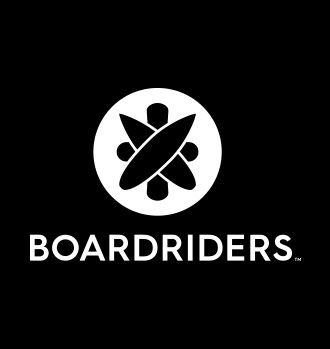
Boardriders, Inc., is a leading action sports and lifestyle company that represents a casual lifestyle for young-minded people who are inspired by a passion for outdoor action sports.
2017
The Quiksilver in Memory of Eddie Aikau is held in epic conditions and won by John John Florence. Quiksilver Inc. emerged from bankruptcy and Oaktree Capital Management become the majority shareholder. Revenues top $2B.
2016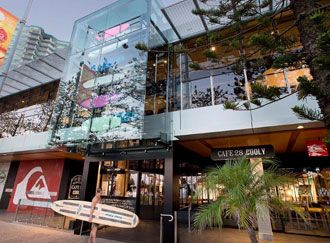
Boardriders Clubs stores are opened in Torquay and Coolangatta, Australia. Quiksilver Inc. in the USA files for Chapter 11 bankruptcy. Travis Rice and Quiksilver release snowboard film The Fourth Phase.
2015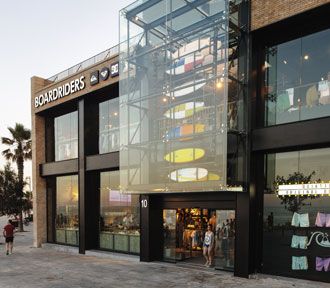
A boardriders club store is opened in Barcelona, Spain. Steph Gilmore signs with Roxy & Roxy celebrates the launch of DVF Loves Roxy Collection.
2013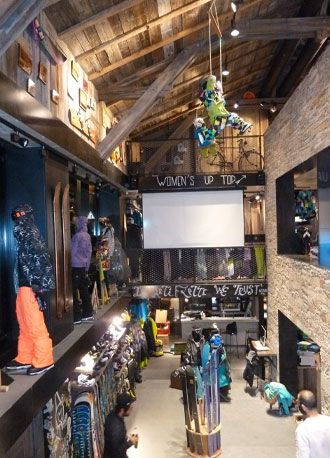
Boardriders Club stores are opened in St.Jean De Luz next to the Campus and Chamonix.
2012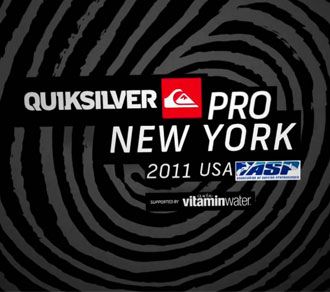
Kelly Slater wins 11th World Title. Quiksilver Pro New York, held in perfect waves at Long Beach. Boardriders Clubs stores opened in Paris Bercy and Ericeira Portugal. Travis Rice and Quiksilver release snowboard film Art of Flight.
2011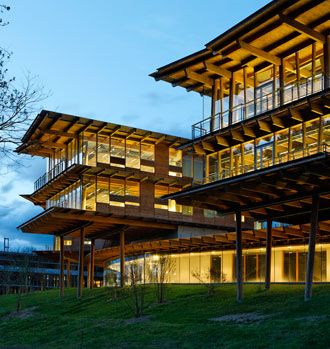
Kelly Slater wins 10th World Title. The European HQ in St Jean des Luz France, known as « The Campus », is inaugurated and the Boardriders Club in Capbreton unveils a new retail concept, 15 years after its initial opening.
2010« Globalisation » possibly best describes the decade following the turn of the century. Acquisitions were numerous & although not all of them prosperous, revenues continued to soar. Quiksilver officially became a global operating entity and revenues surpassed $1B. Brand visibility heightened considerably, be it from retail presence in key geographic locations or presence on mainstream TV shows.The company expanded globally.
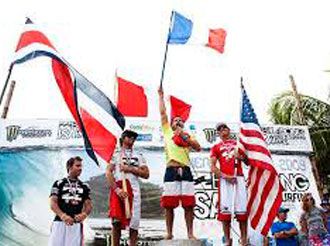
Jeremy Flores crowned ISA World Surfing Champion.
2009
Kelly Slater wins 9th World Title. Rossignol is divested. Travis Rice and Quiksilver release snowboard film « That’s It, That’s All ».
2008
Kelly Slater wins 8th World Title
2006
Quiksilver signs legendary skater Christian Hosoi. Danny Way jumps the Great Wall of China and is voted « skater of the year » by Thrasher magazine. Kelly Slater wins record breaking 7th world title and Chelsea Georgeson wins the Women’s World Surfing title. Quiksilver acquires Rossignol and the Surfection retail chain, expanding its retail presence in the Australian market.
2005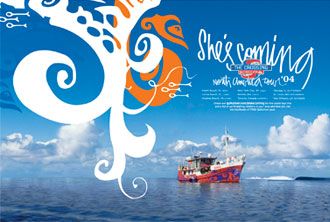
Quiksilver becomes a $1 billion company. The acquisition of DC Shoes is completed. Boardriders Store is opened in Las Vegas and The Crossing goes to the USA. Tech division for Sunglasses, Watches, Wetsuits & Accessories is globalised. Sofia Mulanovich wins the Women’s ASP World Surfing Title. A Tsunami hits the Indian Ocean and the Nias Foundation is formed.
2004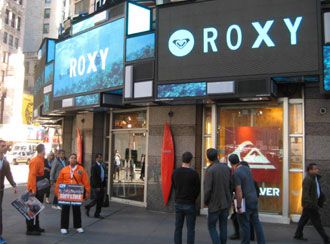
QS Entertainment teams up with Fox TV to launch 54321 TV show. Boardriders Store opens in Times Square, NYC. Joint venture for retail expansion into mainland China announced with partners Glorious Sun. Global Men’s shoe product launched. Kelly Slater authors autobiography « Pipe Dreams ». Roxy teams up with MTV to launch « Surf Girls » TV show.
2003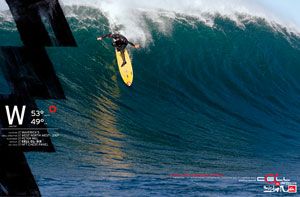
Quiksilver designs a revolutionary new wetsuit « The Cell » featuring increased flexibility, lighter weight, total freedom.
Quiksilver Inc. and Quiksilver APAC merge to form a global operating entity, with combined revenues over $800m.
Danny Kass wins Silver at 2002 Winter Olympic Games for snowboarding. The Crossing travels through Europe and
Kelly wins The Eddie.
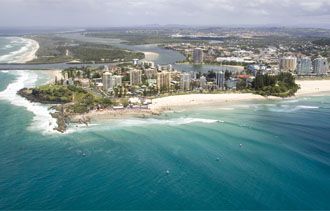
First Quik Pro Gold Coast / Roxy Pro Gold Coast
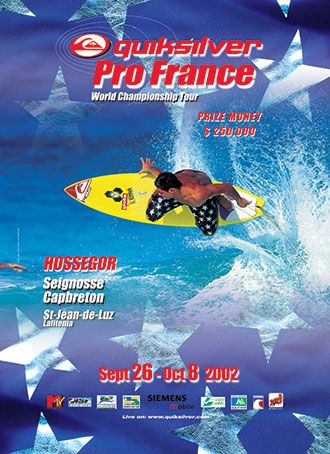
First Quik Pro France / Roxy Pro France
2002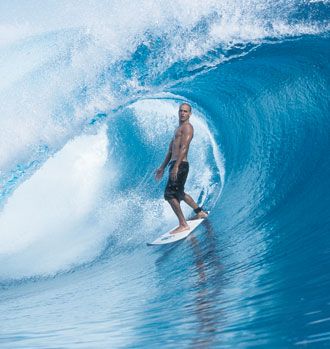
Kelly Slater wins his tenth « Surfer Poll Award » and returns to the ASP World Tour. Quiksilver Pro France cancelled after 9/11 attack on the World Trade Centre in NYC.
2001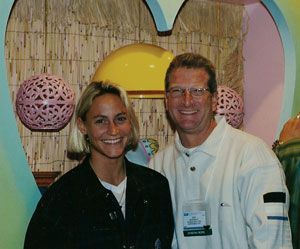
Quiksilver revenues top US $519m. Quiksilver Inc. establish the Quiksilver trademarks worldwide with the acquisition of all of the shares in QS International. An alliance is formed with Tony Hawk to create a signature apparel line, « Hawk » is launched. Quiksilver Europe (Na Pali) acquires Gotcha Europe. First Roxy Store is opened and first surf camp established. « Alex Goes » is launched.
2000The 90’s undoubtedly represented some of THE most exciting times in the history of the brand. Wonderkid, Kelly Slater, was signed in 1990 and went on to win an unprecedented six world titles, before retiring temporarily in ’98. Roxy was born, Lisa Andersen was signed and the two enjoyed unparalleled success over the following ten years, including four consecutive world surfing titles for Andersen between ’94 – ’97. The Crossing, possibly the most innovative marketing concept ever seen in this industry, was launched. The 90’s were also synonymous with professionalism and QS were taking it to a whole new level, rapidly leaving the rest of the industry in their tracks.

The « Quiksilver Crossing » is launched, the greatest surf adventure ever with a strong environmental focus. WCT surfing contest moved from G-Land to Tavarua, Fiji. The « Quiksilver Men Who Ride Mountains » contest happens at Mavericks and is won by Flea Virostko. Quiksilver sponsor the Silver Edition Masters in Lafitenia, France. Quiksilver Inc. Moves to Huntington Beach and Quiksilver Europe moves into new HQ in St.Jean De Luz. Boardriders Clubs are opened in London (Covent Garden) and in Paris (Champs Elysees). Quik Jean and Roxy Jean debut. Roxy launches girls perfume « Hula Scent »
1999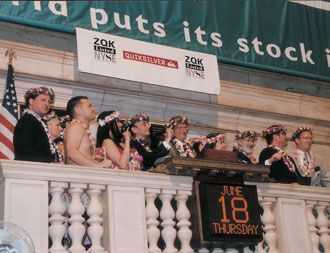
Quiksilver revenues attain US $318m. Quiksilver Inc. lists on the NYSE & bell rings for ZQK. Kelly Slater wins his sixth ASP World Title. Quiksilver goes one, two, three in the surfing world with Kelly, Mick Campbell and Danny Wills. Jan.1 1998 Ross Clarke Jones tows in at Outside Log Cabins in largest waves ever ridden. Kelly Slater retires.
1998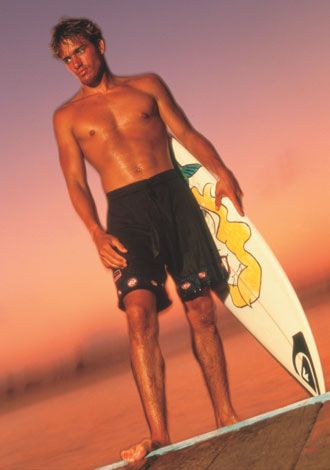
Quiksilver launches internet website, www.quiksilver.com. Kelly Slater is highest money earner in ASP history. Robby Naish continues to dominate world windsurfing. « Mr Sunset » is released, the complete story of Jeff Hakman told. « Clicker Bar » logo is introduced.
1997
Quiksilver Pro at G-Land hailed as « the ultimate surfing event ». Kelly Slater wins fourth Pipe Masters and fourth ASP World Title. Winter Sports Division is created with boards, boots, bindings, accessories and outerwear, in conjunction with Mervin. Mervin Snowboard Manufacturing company is acquired. First Roxy store opens in Honolulu, HI.
1996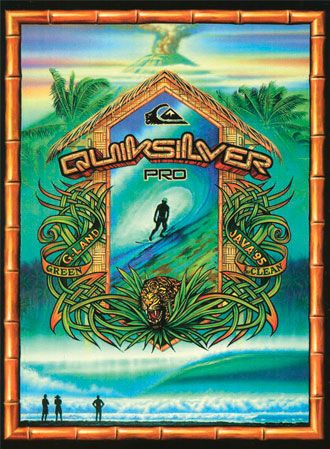
Quiksilver revenues hit US $174m. Kelly Slater, Lisa Andersen and Rusty Keulana are again all World Surfing Champions. Quiksilver sets the new standard in Professional surfing events, by staging the inaugural « Quiksilver Pro » at G-Land in Indonesia. The Quiksilver snow team travel to Greenland and licences in Chile.
1995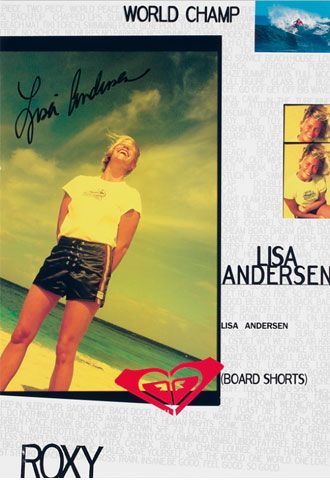
Kelly Slater wins his second ASP World Title. Lisa Andersen signs with Roxy and becomes Women’s ASP World Champion. The « Quiksville » instore concept is invented. Quiksilver licences in Argentina and Chile.
1994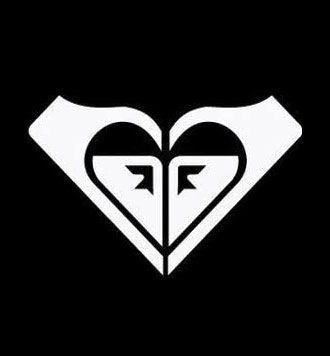
The Roxy logo, two Quiksilver logos mirrored to form a heart shape, is born, along with the Roxy signature girl’s boardshort, offering the same levels of flexibility & fit that men’s shorts offered. Quiksilver acquires Raisins.
1993
Kelly Slater wins his first Pipeline Masters and the ASP World Title. « Keep Your Balance » campaign is launched and the first « Boardriders Club » is opened in Hawaii. Roxy extends its product offering to include sportswear, denim and snow wear.
1992
QS « Boys » product is launched, along with « Silver Edition » division « QUE » Quiksilver Inc. acquires Quiksilver Europe in a move towards creating a global company. Tom Carroll wins the Pipe Masters. Quiksilver licenses in Turkey and Indonesia. Roxy is launched in America, with a range of swimwear.
1991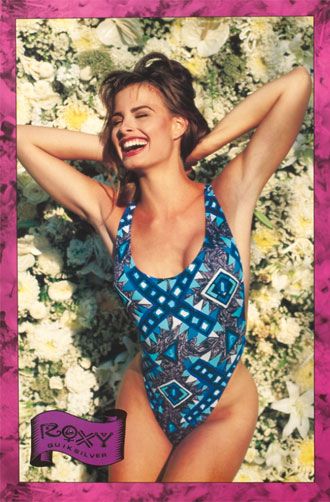
The Roxy brand is born and introduced to the surf market, capturing the imagination of a whole new generation of young women.
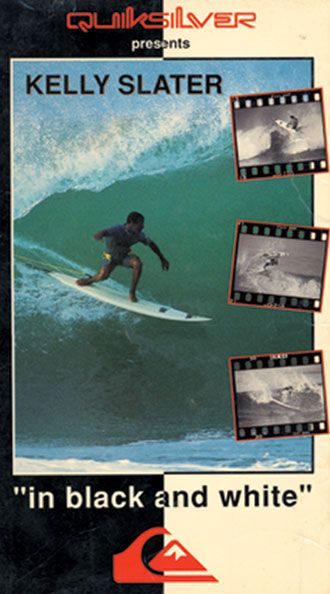
Kelly Slater signs with Quiksilver and wetsuit manufacturing begins. « Kelly Slater in Black and White » is produced, the best selling surfing video of all time. Keone Downing wins big wave event, the « Quiksilver in Memory of Eddie Aikau ». Quiksilver Denim (QSD) hits the market place. Transition from ski focus to snowboard emphasis. World champion halfpipe snowboarder Shaun Palmer signs with Quiksilver.
1990The 80’s were synonymous with a decade of decadence - bold, bright boardshorts and colourful characters. From a business standpoint, Quiksilver began to develop strategies for future global expansion, setting up licencees in markets offering the largest potential growth, namely Europe and Japan. Quiksilver understood the importance of diversification. Developing product ranges suitable for the growing youth culture participating in Winter sports, particularly in the Northern hemisphere, was inherent to future success. The 80’s heralded a significant shift from being a purely surf centric business to something much bigger.
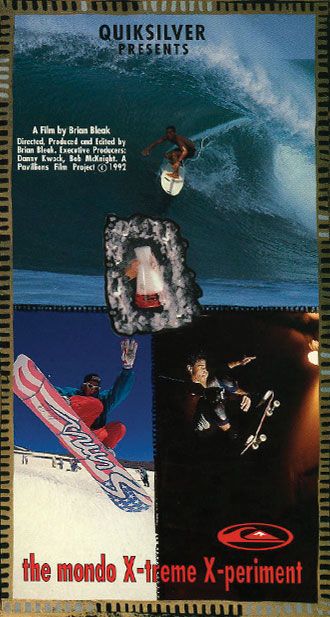
Celebrating the 20 Year anniversary of the brand. « Mondo X-treme X-periment » the first surf, skate and snowboarding video is produced. Quiksilver creates Gen-X product group.
1989
Quiksilver and Tom Carroll create surfing history when the twice world champion signs an exclusive contract for $1m, the most lucrative deal in the sport. Quiksilver licences in South Africa.
1988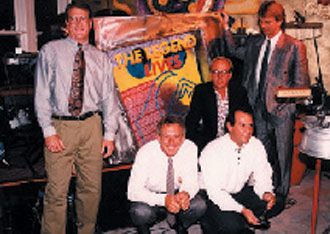
Quiksilver sponsors halfpipe world champion snowboarder, Craig Kelly. Jack Johnson signs with Quiksilver and Mel Gibson wears Quiksilver in Hollywood blockbuster « Lethal Weapon ». Quiksilver licences in Brazil.
1987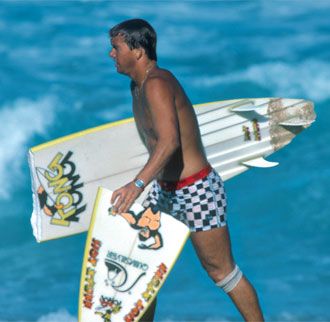
Quiksilver Inc. In the United States goes public and is listed on the NYSE. Quiksilver licenses in New Zealand and Clyde

Clyde Aikau wins the First Quiksilver in Memory of Eddie Aikau at Waimea Bay, Hawaii
1986
Quiksilver licences NaPali to manufacture and distribute throughout Europe. Founders are Harry Hodge, Jeff Hakman, Brigitte Darrigrand & John Winship. The 1st « Quiksilver In Memory of Eddie Aikau » big wave event is held at Sunset Beach, Hawaii. « Performers » the first branded surfing video is released, produced by Harry Hodge and Bruce Raymond.
1984
« Warpaint » theme by Simon Buttonshaw, is introduced on boardshorts & Robby Naish signs with Quiksilver.
1983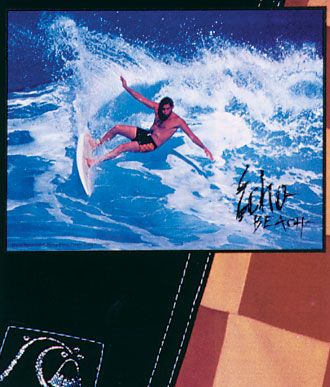
Quiksilver licences Surf n Sport to manufacture and distribute in France.
1982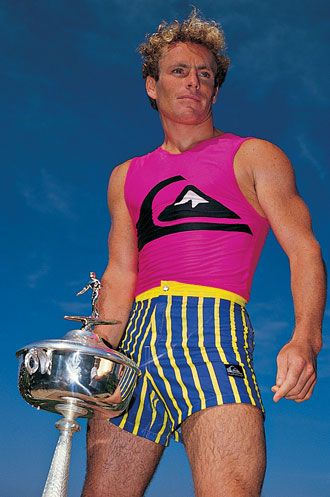
« ST Comp » stretch boardshorts introduced, with new logo and graphics. Quiksilver licences in Japan. Los Angeles based designer Ray Smith is commissioned to update the mountain and wave logo.
1981
Quiksilver introduces « Echo Beach » boardshorts, featuring radical print designs with polka dots, harlequins, stars and checks, inspired from jockeys jerseys.
1980Alan Green and John Law made the first pair of Quiksilver boardshorts in 1969, in a small garage in Torquay. They were dedicated to creating something that had never before been seen. A short made to surf in, really made to surf in. Something that would work with you in the water and embody all the youth, excitement and creative energy that makes surfing what it is. Little did they know what would come of it all.
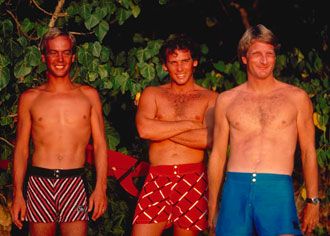
Quiksilver Garments is founded in Australia, to lead and service Quiksilver licencees worldwide.
1979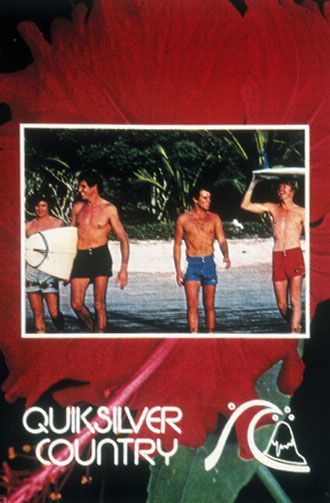
« Quiksilver Country » a print theme inspired by Polynesia, is introduced to the marketplace. Quiksilver products are exported to France. Bruce Raymond and Rabbit Bartholomew become the first sponsored team riders and Rabbit goes on to win the World surfing title.
1978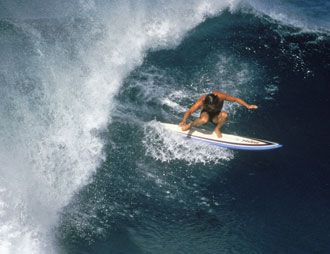
Quiksilver begins exporting products to Japan & sponsors surf film « Band on The Run», featuring Australian surfers Wayne « Rabbit » Bartholomew, Bruce Raymond, Paul Neilsen and Brian Cregan
1977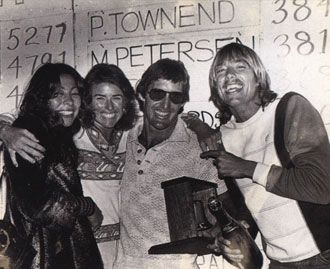
The first licensing contract of Quiksilver is given to Jeff Hakman. He leaves Torquay with a Bells trophy and an agreement to distribute Quiksilver in the States. Along with Bob Mc.Knight, they establish Quiksilver USA.
1976
The reputation of Quiksilver boardshorts grew quickly and so did the demand. Soon Quiksilver was available all over Australia and the world’s best surfers all wore Quiksilver boardshorts throughout the 70’s.
1975
UG Manufacturing (Quiksilver) first exports boardshorts to the Lightning Bolt shop in Hawaii
1974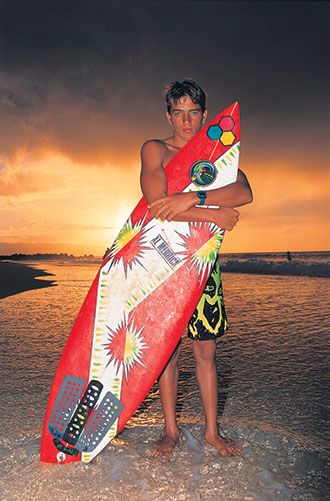
Kelly Slater born 02/11/72
1972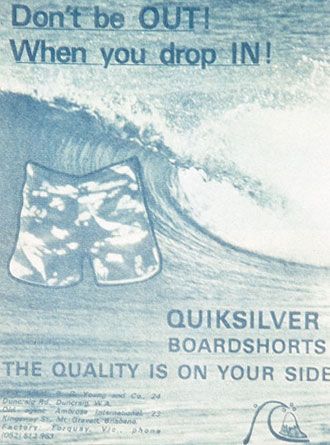
Quiksilver boardshorts with a swan logo, make their first appearance in Australian surfshops. This logo was soon replaced by the first « mountain and wave » logo
1970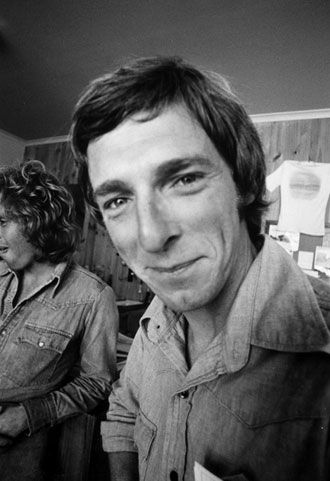
At the Rip Curl factory in Torquay, Alan Green started working on prototypes for a new kind of boardshort, using aspects of wetsuit technology, such as snaps and velcro flies
1969